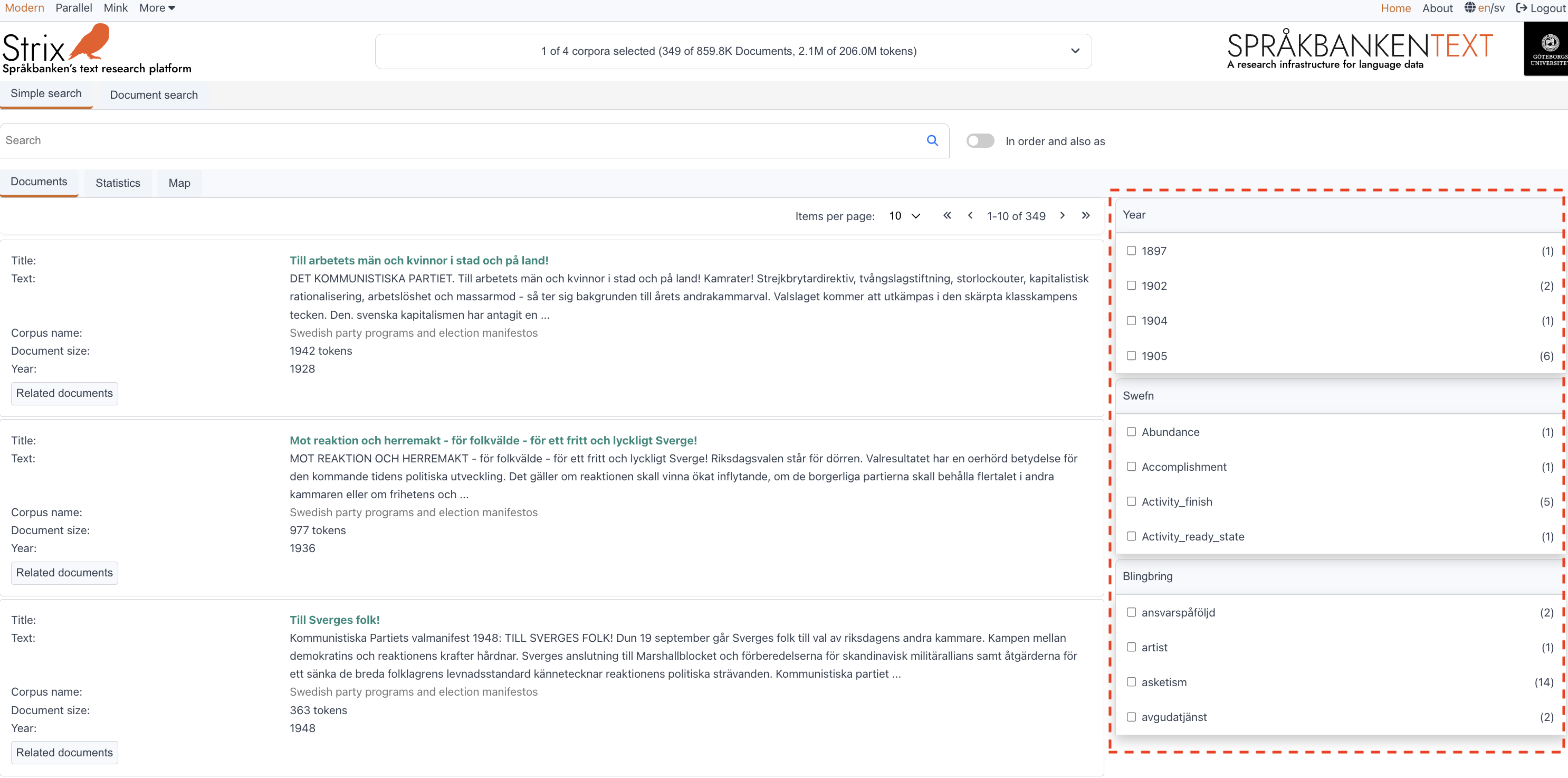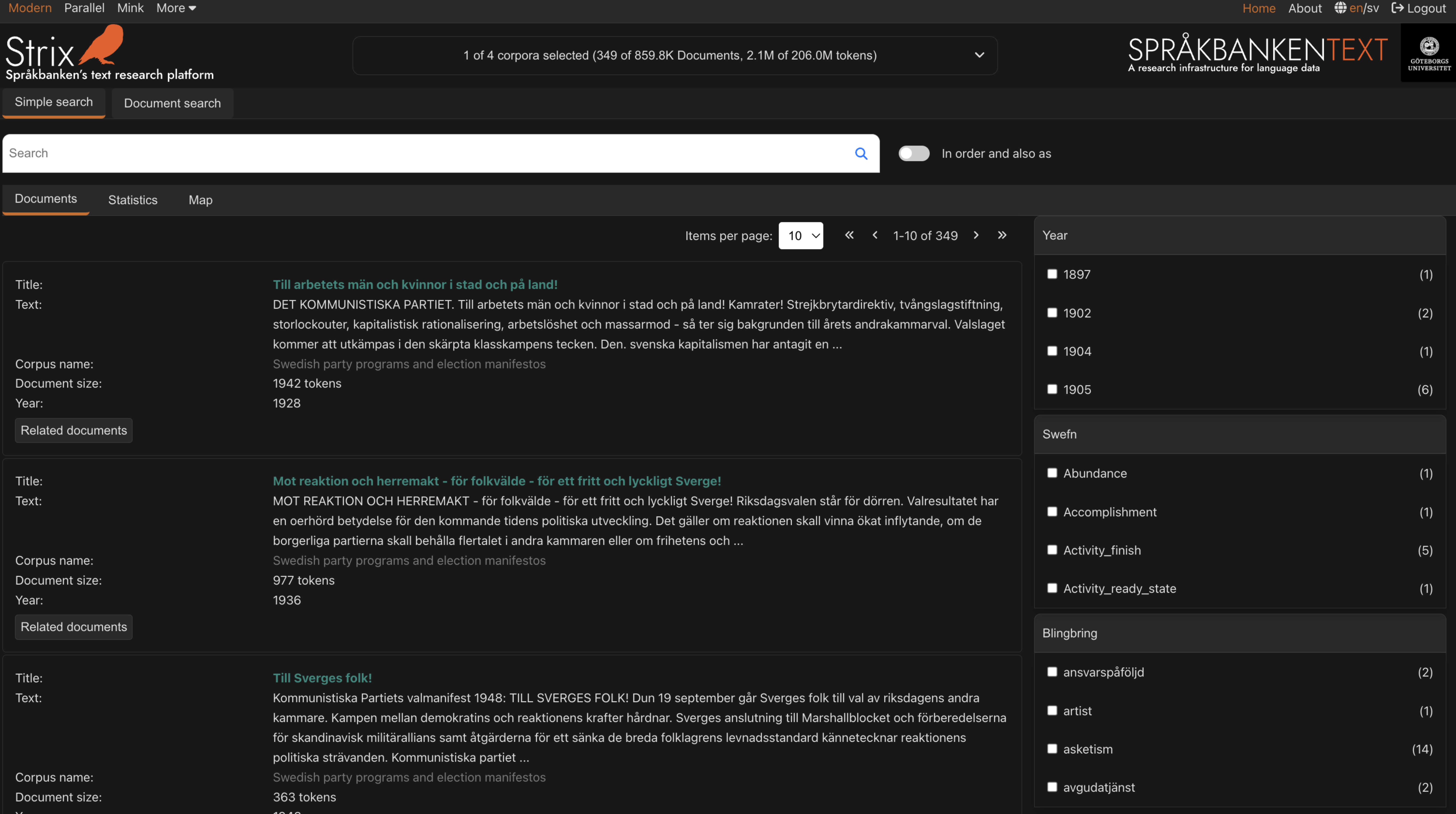Appearance
Filters
Filters in Strix are one of the core functionalities, playing a crucial role in narrowing down search results. When working with a large collection of documents from various genres, such as newspapers, historical texts, and more, filters allow users to refine their search queries and focus on specific subsets of documents based on predefined criteria.
How Filters work
Filters in Strix are designed to support advanced and complex filtering capabilities. Users can scroll through the available options in each metadata filter to refine their search. Here's how it works:
Indexing metadata
Each document in the collection is indexed with metadata at three levels:- Text level: Metadata such as genre, newspaper, year, author, topics, and more.
- Sentence level: Metadata such as named entities and geo-locations.
- Word level: Metadata such as part of speech, word form, sentiment analysis, and more. (More details about word-level metadata can be found in the Document section.)
Applying filters
When a user applies a filter (e.g., selecting "year," "topics," or other metadata), Strix uses the indexed metadata to narrow down the search results to documents that match the filter criteria.Combining filters
Users can combine multiple filters to refine their search further. For example, they can filter for "newspapers" published in 1905.Efficient query execution
The filtering process is optimized to ensure that filters are applied quickly and efficiently. This allows users to refine their searches seamlessly, even when working with large datasets like Wikipedia, which contains more than 800,000 documents in the Swedish language.
Examples of filters
Year filter
Focus on documents from a specific year, such as "1920."
Search example: Year 1920
(Example corpus: Swedish Party Programs and Election Manifestos)Text classification (SweFN)
Retrieve documents with a specific topic, such as "Satisfying."
Search example: SweFN topic - Satisfying
(Example corpus: Swedish Party Programs and Election Manifestos)Text classification (Blingbring)
Search for documents with a specific Blingbring topic, such as "afton."
Search example: Blingbring topic - Afton
(Example corpus: Detektivaavdelningen)
Standard filters
Currently, the Year, Text classification (SweFN), and Text classification (Blingbring) filters are available on the right-hand side of the interface, as shown in the figure below. These are referred to as Standard filters and provide quick access to commonly used filtering options.


Advanced filters
For Advanced search, all indexed metadata will be available as filtering options. Since each collection contains a vast amount of metadata, it is challenging to fit all options on the main page. Advanced filters provide a more comprehensive filtering experience, allowing users to refine their search using the full range of metadata attributes.
Filters empower users to explore and analyze large collections of documents effectively, making it easier to derive insights and find relevant information.
